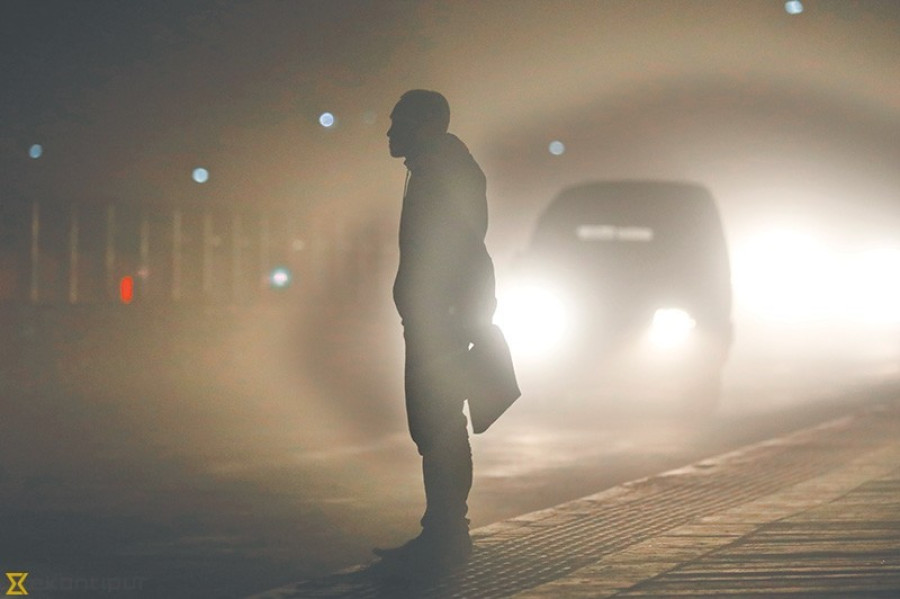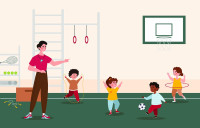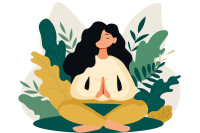Life & Style
To live in hope
Kathmandu moulds you into someone who easily adjusts. You learn to adjust inside public vehicles. You learn to adjust while waiting to receive your license. You learn to not raise your voice when you are stopped for countless hours for some VIP. You learn to spill your dissatisfaction with friends over a three-hundred-rupee latte in an air-conditioned café. You learn to leave these conversations with even more disillusionment than when you entered.
Asmod Karki
A few months ago, a video of a broomer machine vacuuming dust and duly blowing it up into the wind in Ratopul went viral across social media. Many mocked the government for not paying attention to the basics: could they not see that such a broomer defeated its basic purpose? Kathmandu Metropolitan City reacted quickly and imported five made-in-Italy broomers. These new broomers did what they were supposed to do: collect the dust, without instantly ejecting it back. The authorities published planned routes for cleaning, with Ratopul on the list. As a resident of Ratopul, I hoped that this time around the dust would settle and Ratopul would be clean once and for all.
Yet, my hopes did not last long. One fine Wednesday morning, I was headed to a local stationary store and as soon as I hit the main Gaushala Road, near Ratopul bridge, a thin layer of dust settled on my glasses. I rushed back to the comfort of my apartment.
As much as I desire to be an eco-friendly citizen by commuting in public transportation or riding the bicycle, the road realities of Kathmandu deter me. I brought up the idea of biking with one of my relatives recently. “Bhanja babu, it’s like adventure sports. I highly recommend not attempting it. You could do it as a hobby though,” my uncle warned. “Dhuwa-dhulo is not even the main issue. Everyone corners a cyclist. It’s just not safe.”
If riding a bicycle is not safe, then what about a motorbike or a scooter? Those are two-wheelers too. The wannabe eco-friendly citizen in me wanted to counter his arguments. Yet, I knew that there was some truth in what he was saying.
If one hopes to cycle on Kathmandu’s streets, they have to instinctively adapt to informal traffic norms, in addition to formal ones, to safely make it to their destination. These informal norms dictate that smaller vehicles yield to larger ones, cheaper ones to expensive ones and private cars to governmental and diplomatic ones. There are exceptions to this rule though.
Try to remember: when was the last time you saw a blue-plate or a red-blue plate stopped by a traffic police officer for driving under the influence? Have you seen a SUV or a tempo yield to a cyclist? I wish things were different and that I had the courage to ride a bicycle in Kathmandu. But, so far, I have not been able to muster that audacity.
These days, I normally ride on a scooter that I borrow from my sister. Since arriving in Nepal in late January, I have ventured to take public transportation just once. The trip from Kalanki to Ratnapark and then from Jamal to Ratopul reminded me why I avoid public transport within the Valley. The ordeal starts right when you stand on the road to stop a vehicle. There are no designated stops to begin with. In theory, there are some stops marked by dust-ridden signs. Yet, it is widely understood and expected that public vehicles stop wherever the drivers or the passengers desire. “Ae bhai, could you stop here? I’ll get off quickly,” someone asks as the microbus I’m in suddenly stops near Kalimati. The driver has obliged.
Public vehicles are often overcrowded, too. If you’re lucky, you’ll get to sit on the edge of a seat, next to the door or all the way back next to the rear screen, where you might save some sweat. This also allows you to get by pretending to adjust for the seventh-person on the edge, whose one arm aims to grasp something—anything—for support. “Dai, could you please move further and make space for aunty?” You smile uneasily and the aunty on the edge, who barely manages to hang on, mirrors you.
A few minutes into the journey, and you suddenly start to feel uneasy. Sharing a 10-seater microbus with 14 others suffocates you. The journey is brief, yet you need some fresh air. But you persevere. No one else has complained, why should you?
As Ratopul approaches, you realise you didn’t carry an umbrella. It has stopped raining by now, but some droplets still fall. And you do not have the patience to wait out the rain. “Dai, could you stop near the bridge?” The moral dilemma does not exist this time around. There are no designated bus stops on the Gaushala Road. You could stop anywhere you want without feeling guilty of having broken traffic rules.
A few more times, you tell yourself. A few more times, and it will become a habit and the tiny bit of conscience that is left will stop asking more questions. You realise that you could not only stop where you like in Ratopul, but also in Baneshwor, Gaushala and Boudha. It does not matter if there are designated stops or not. Rules matter only if there are traffic personnel around.
Kathmandu moulds you into someone who easily adjusts. You learn to adjust inside public vehicles. You learn to adjust while waiting to receive your license. You learn to not raise your voice when you are stopped for countless hours for some VIP. You learn to spill your dissatisfaction with friends over a three-hundred-rupee latte in an air-conditioned café. You learn to leave these conversations with even more disillusionment than when you entered.
Kathmandu is not organised and sanitised as I wish it to be. Yet, I try to perceive it as beautiful. I keep reminding myself to learn to enjoy the city. I try to enjoy a cup of salt sprinkled fifteen-rupee tea on the steps of Krishna Mandir. The truck that carried the tea from the hills of Ilam to my palms in Lalitpur must have left their own trail of dust and smoke in the air. I try not to think about that and enjoy my tea.
I hope that someday I would not warn but instead encourage my niece, who’s 14 now, to bike on the streets of Kathmandu without a mask. She will bike freely along Gaushala Road without fear of getting hit, or the dust slowly collecting in her lungs. That day, she will not be wearing a mask as her bike climbs uphill from Gaushala Road to Gyaneshwor. The lush green trees on the sidewalk will fill her lungs with fresh oxygen. The bike will speed past Sano Gaucharan and Naxal. She will stop promptly at the smart traffic light in Bhatbhateni. As the light turns green, she will patiently continue her ride along Thirbam Sadak with hundreds of fellow bikers. Her arrival at Baluwatar, Gate No. 3 will be simple yet elegant, befitting a public servant. She will get off her bike and open the gate herself as most of the guards will have been reassigned away from Baluwatar to serve the public. In the absence of escort vehicles, and their cacophonous sirens, the sparrows on the trees will welcome her with their chirping.
That someday might take years or even decades to arrive at. Yet, I firmly believe that every passing moment leads us into the future, away from the distant past.
I live in Kathmandu with the hope that perhaps tomorrow will be different. That the chaos will someday make sense and the dust will finally settle.
Karki can be reached at [email protected] …




 7.12°C Kathmandu
7.12°C Kathmandu








%20(1).jpg&w=300&height=200)

